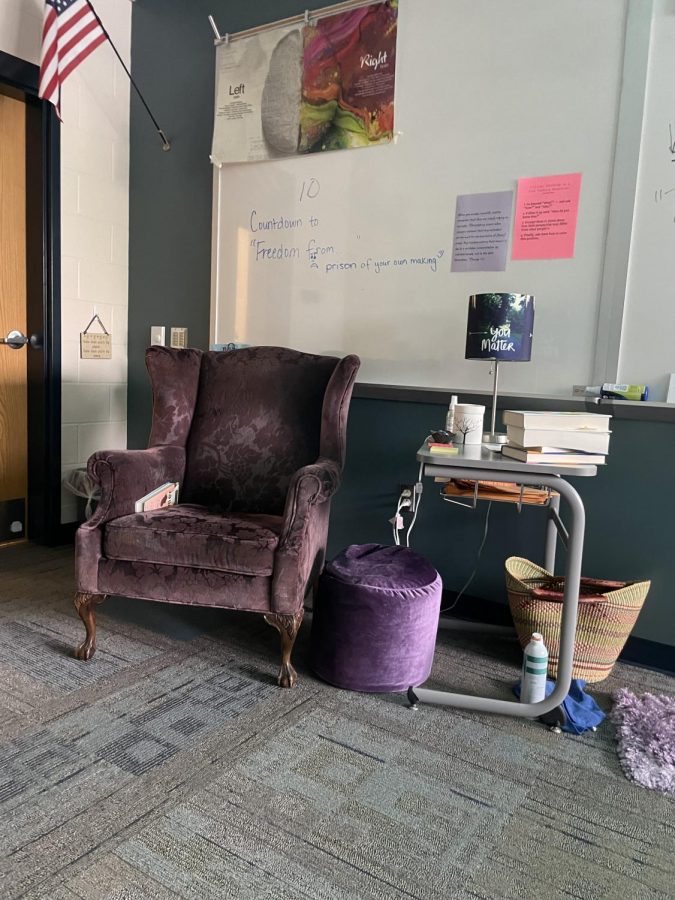Surrounded by cinder blocks and windowless walls, students spend seven hours in classrooms listening to lectures, participating in class discussions and running labs every single day.
The lack of motivation possessed by students on the daily can be traced back to how they feel in their classrooms’ physical environments. To combat this, teachers are trying to create more comfortable learning environments for their students.
Ann Berger, an English and social sciences teacher, recently moved classrooms. Her old room was on the second floor and had no windows, but now, she is grateful to see natural light every day.
Although classroom placements are out of the teachers’ control, many, including Berger, use the windows to their advantage. On nice days, she opens her windows to let a bit of fresh air into her classroom. Not only does she do this, but she incorporates mindful meditation into her psychology classes everyday.
“I think we all would benefit from a school-wide expectation of mindfulness meditation. It is appropriate to incorporate mindful meditation into a psychology course where it is expected that we learn about mental health and brain compatible/brain maximizing activities,” Berger explained. “How often do we teach skills that are usable now and applicable for the future? What skills do we learn in school now that we will want to have access to in the future? Mindfulness meditation is one of the skills that works now and later. I really hope that when students may need to access this skill, they will be able to do so.”
The purpose of this daily minute of mindfulness is to help rebalance everything going on in students’ lives.
For example, Berger tells her students to focus on their breathing and what they are experiencing in the present moment, instead of what happened in the past or what will happen in the future.
It is moments like these that students are able to forget about their stresses and find some comfort in a moment of silent reflection.
One of the units that students study in psychology is the effects that mindful meditation has on the brain. These benefits are calmer moods, a better understanding and a faster memory recovery. Not only does this activity have a quick effect but a long-lasting one as well.
Junior Julianne Binto is a student in one of Berger’s psychology classes. She elaborated, “I have her seventh hour, and by then, thoughts and worries have started to accumulate in my head. Just taking a minute to sit quietly and focus on my breath helps me relax and refocus.”
A refreshed positive headspace encourages the best learning students can have, especially at the end of a long day.
In order to create a more comfortable learning environment for her students, Lynne Lundberg utilizes class setup to her advantage. “I like to arrange the room to encourage students to talk together. Some students are more comfortable communicating in small groups than in the whole class setting and sitting at tables helps make that small group communication feel natural,” she said.
Along with the setup of the desks, she displays student work and quotations that Lundberg hopes will inspire students. Her goal is to create a relaxed, colorful environment that promotes learning.
The positive effects of a minute of mindful meditation or a more comfortable room setup have been seen on students like Binto who believe that because of these, students, just like herself, are able to perform their best.
But Berger believes that in order to fix the problem, we need to get to the root of the issue.
“I think that many students are struggling with their mental well-being, and I often wonder how we could be structuring the learning environment to accommodate students’ needs. I don’t know what is really impacting the decline in performance and concentration and mood this year, but I really do think that students aren’t feeling great joy.”
Until the reasons for students’ negative feelings towards schools are worked on at their roots, creating a more comfortable learning environment is just the beginning of improving student academic performance, morale and mental well being.









